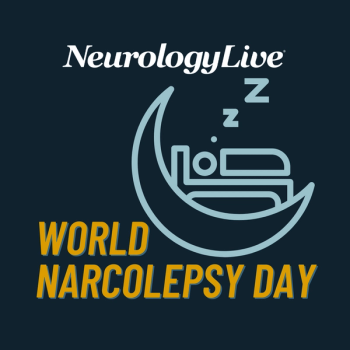
A recent analysis of the PREVENT and CHAMPION-NMOSD found no significant differences in safety outcomes for patients with AQP4+ NMOSD who were treated with rituximab prior to starting C5 complement inhibitors in specific timeframes.

Isabella Ciccone, Associate Editor, NeurologyLive®, has been with the team since September 2022. Follow her on Twitter @iciccone7 or email her at [email protected]

A recent analysis of the PREVENT and CHAMPION-NMOSD found no significant differences in safety outcomes for patients with AQP4+ NMOSD who were treated with rituximab prior to starting C5 complement inhibitors in specific timeframes.

Jacqueline French, MD, professor of neurology at NYU Grossman School of Medicine and chief medical officer of the Epilepsy Foundation, talked about findings from a newly published study assessing XEN1101 in patients with drug-resistant epilepsy.

Catch up on any of the neurology news headlines you may have missed over the course of September 2023, compiled all into one place by the NeurologyLive® team.

A recently developed machine learning model could analyze retinal images as well as associated data of specific features to recognize patients with mild cognitive impairment.

RGX-202, a gene therapy for Duchenne muscular dystrophy, was well-tolerated with no therapy-related serious adverse effects in 3 patients who received the level 1 dosage.

Researchers proposed a harmonized definition of progression independent of relapse activity that may improve the comparability of results in current and future study cohorts, according to a newly published systematic review.

Elena Koundourakis, PhD, head of orexin franchise development at Takeda, talked about the phase 2 trial investigating TAK-994 in patients with narcolepsy type 1, which showed significant improvements in wakefulness, despite discontinuation because of hepatotoxicity.

A recent finding from a qualitative study raises concerns about patient safety in healthcare because the system in the US is not well equipped to address the unique needs of older adults living alone with cognitive decline.

In a cross-study analysis, omaveloxolone slowed progression in FA by at least 50% each year for 3 years compared with corresponding data from an external control group in a natural history study.

Over a 4-year follow-up, SARA progression was substantially linear. Age at evaluation also influenced the speed of SARA progression, while disease duration did not improve the prediction of the statistical model.

In honor of Limb-Girdle Muscular Dystrophy Awareness Day, held September 30, 2023, get caught up on some of the latest news in LGMD, with data updates and expert insights all in one place from the NeurologyLive® team.

The AI-based SOMNUM technology uses diagnostic algorithms based on multi-channel/time series sleep biosignal data to deliver fast, accurate diagnostic information for providers.

Erin Longbrake, MD, PhD, associate professor of neurology at Yale School of Medicine, discussed the importance of understanding rare autoimmune disorders to effectively design clinical trials and treatment strategies, especially for heterogeneous conditions like NMOSD and MOGAD.

As part of our monthly clinician spotlight, NeurologyLive® highlighted neueomuscular expert Peter Kang, MD, director of the Paul and Sheila Wellstone Muscular Dystrophy Center and professor of neurology at the University of Minnesota.

Patients who self-identified as Black and were living in less affluent neighborhoods were less likely to be seen in one large memory clinic as well as have more severe dementia at initial visit.

The phase 3 SYMPHONY trial assessing AXS-12, a selective norepinephrine reuptake inhibitor for narcolepsy, was initially expected in the third quarter of 2023.

Coya Therapeutics expects to release data from the biomarker analyses of COYA 302 and publish the full results from the trial in a peer-reviewed journal in the second half of the year.

Although research supports the use of physical therapy as an effective treatment for Parkinson disease, implementation factors including type, timing, frequency, and durability of outcomes remain mainly untouched.

Between ages 65 to 69, gene carriers of APOE ε4 could detect an average of about 3.2 of the smells presented, compared with about 3.9 smells for noncarriers of the gene variant.

Additional biomarker findings from up to 2 years of DNL310 treatment suggest positive changes in adaptive behavior and cognition as well as improvement in auditory function among pediatric patients with Hunter syndrome.

In an integrated meta-analysis of the HEALEY ALS platform trial and RESCUE-ALS trial, 30mg of CNM-Au8 resulted in 59% decreased risk of mortality among participants with ALS compared with PRO-ACT matched placebo over long-term follow-up.

A recent analysis showed a form of tau that could serve as a biomarker to track and explore whether investigational tau-based drugs are effective against Alzheimer disease.

Among 443 episodes in 149 patients treated with different doses of BXCL501 over 12 weeks, the 60 mcg dose showed a reduction in agitation for the first and all treated episodes at 1 and 2 hours.

On World Narcolepsy Day 2023, get a recap of the latest advances in narcolepsy that you might have missed over the last few months, compiled all into one place by the NeurologyLive team.

Leigh Charvet, PhD, professor of neurology at the NYU Grossman School of Medicine, talked about a trial that aims to address cognitive impairment in patients with long COVID through a unique, remote, and home-based treatment approach.

In honor of World Alzheimer Day, held September 21, 2023, get caught up on some of the latest news in Alzheimer disease as the NeurologyLive® team shares some of our data updates.

A study examining eligibility criteria for Alzheimer agent trials showed that a significant proportion of older adults with early cognitive impairment may not qualify for these therapies because of health conditions and other factors.

In a large cohort of 848 pediatric participants with challenge-proven food allergy, investigators identified narcolepsy-like sleepiness as a symptom impacting more than 1 in 10 patients with food allergies.

In a recent multisite analysis of 361 patients with REM sleep behavior disorder, 84% had neurological abnormalities in at least one domain observed.

In a recent long-term analysis of a phase 3 trial, the most common treatment-emergent adverse events that led to discontinuation of low-sodium oxybate were cataplexy, headache, nausea, and psychiatric disorders.